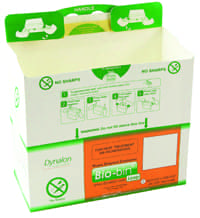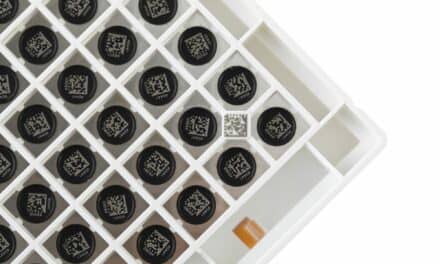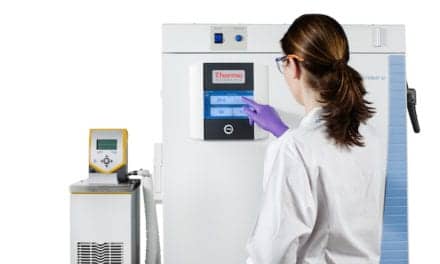Short answer: Plenty.
BY DANIEL J. SCUNGIO, MT (ASCP), SLS, CQA (ASQ)
 |
“Dan The Lab Safety Man,” has more than 20 years’ experience as a certified medical technologist. He was a laboratory manager for 10 years before becoming the laboratory safety officer for Sentara Healthcare, Norfolk, Va, a system of seven hospitals and more than 20 laboratories and draw sites in the Tidewater area of Virginia. |
Safety in the laboratory is a multifaceted topic that can be considered from many viewpoints. There are some, however, who view safety as one boring subject that has been discussed over and over—especially if they are seasoned lab veterans. If you know some of those people—or better yet, if you are one of those people—the time has come to switch your perspective.
From one vantage point, lab safety could be about engineering controls and work practice controls. These areas focus on general lab safety equipment such as biological safety cabinets, chemical fume hoods, and even personal protective equipment (PPE) such as lab coats, gloves, and face protection. Many would imagine there is no news in this arena.
What about lab safety culture? Things have definitely changed in the past 20 years. No longer do we see cigarettes sitting on the bench in the microbiology lab, or coffee cups next to the hematology analyzer. It is now commonplace to wear lab coats and gloves.(You should know that as a laboratory safety officer, part of me cringes to think those last two sentences may not be true in every lab!) But let’s be honest. These changes are not really new, are they? So when it comes to the topic of safety culture, it might be easy to believe not much has changed in quite a while.
If you are having any issues in your lab regarding safety, you may be thinking that since there is nothing new, you will probably have to pull some old rabbit out of your hat. It must be time to retrain your staff on another “outdated” lab safety topic. After all, the regulations change slowly, right? When is the last time you saw a real change from OSHA or a lab-accrediting body?
Actually, there is something new in lab safety. In fact, there are several new trends, safety items, ideas, and regulations. If you have been too busy to become aware of some of them, you’ve come to the right place. There have been recent updates and changes in all of the areas mentioned above, and some of them will affect what you need to do in your lab this year. If your goal is the improvement of overall lab safety, you can utilize these new ideas starting now to achieve your goals.
What’s New in Lab Safety Products?
Lab Coats. Always an important piece of PPE, fluid-resistant lab coats that protect against blood and 
uncommon to see lab coats worn unsnapped and open, or with sleeves rolled up, or the coat not worn at all. To overcome heat being an issue, DenLine Uniforms Inc, Quincy, Ill, now produces a protective, reusable lab coat with a lightweight back, with the air permeability of a polyester cotton blend (DenLine Protection Plus Style DL170BJ).
DenLine also recently introduced a new, lightweight, disposable lab coat with high fluid resistance, yet offering the breathability about twice that of a polyester-cotton blend (Style DL4260 Disposable Lab Coat, www.denlineuniforms.com/disposable-lab-coats-and-gowns/).
Waste Disposal. Dynalab Corp, Rochester, NY, offers the Bio-bin®, a new product that provides a cost-effective method for certain types of waste disposal. It is a lightweight, 
Chemical Substitutes. A very dangerous chemical is used in many histology laboratories: isopentane. It is often used in histobaths for the quick freezing of tissue. From a safety perspective, isopentane is highly flammable—even the vapors are flammable—and can ignite 
What’s New in Lab Safety REGULATIONS?
OSHA and the GHS. As you no doubt have been made aware, OSHA updated its Hazard Communication Standard in May 2012 to comply with the Globally Harmonized System of Classification and Labeling of Chemicals (GHS). The adoption of the changes occur in several steps for employers and chemical manufacturers, and the steps each have specific deadlines over the next few years.
The first deadline for employers is December 1, 2013. All employees who handle chemicals must be educated about new hazard classification criteria, new labeling requirements (including the standard pictograms), and the new Safety Data Sheet (SDS) name and format. Chemical manufacturers will need to 
DynaLab Corp also makes other safety lab products that are keeping up with GHS. Its multilingual safety vented wash bottles come preprinted with all of the new OSHA labeling requirements, including the pictograms.
CLSI and Lab Safety. In June 2012, the Clinical Laboratory and Standards Institute (CLSI) published its updated document titled “Safety in the Clinical Laboratory (GP17-A3).” This was not a simple rewrite of old lab safety standards. It includes updated guidelines that are in line with OSHA’s 2012 Hazard Communication Standard. It also includes an updated PPE section, and new information about the use of personal electronic devices (MP3 players, cell phones, and tablets).
What’s New in YOUR Lab Safety CULTURE?
| Update for lab personnel who use chemicals |
|
Daniel J. Scungio was a co-presenter, along with Terry Jo Gile, MT(ASCP)MA Ed, at the recent KnowledgeLab 2013 meeting, held by the Clinical Laboratory Management Association (CLMA). |
Now you have your new laboratory safety equipment, and you have trained your staff on the latest regulations and safety standards. Somehow, though, you may still be having those aforementioned safety issues in your lab. So what’s missing? It may be that you need a change in your lab’s safety culture. But how do you make that sort of change in today’s labs?
We work with up to four different generations of laboratorians, and that means at least three different styles of behaviors: the ways in which they learn, the way they prefer to work, and the ways in which they like to be managed. One important piece of improving your safety culture involves getting to know your staff at every level. To create a unified team that will work with you and the rest of the lab, building interpersonal relationships and creating understanding is vital.
When building a safety team, be sure to include people from each area of the lab, and include people from all shifts. Meet with them on a regular basis to keep the culture improvement momentum going. Teach them something new at each meeting. One way to generate strong involvement is to teach your team to train others on specific safety topics such as spill training, fire safety, or even ergonomics. Be sure to teach all lab staff to report safety issues without fear of reprisals. Communicate clearly that coaching their peers is a very important part of being a lab safety professional. It is equally as vital to do a good job at receiving coaching as well.
If your safety culture is good, then you still have work to do. Maintain that culture using regular safety team meetings, staff education, and routine safety auditing. Using a schedule can help you come up with topics to present at staff meetings or huddles, as well. Keeping a strong lab safety culture is an ongoing process, but one that ultimately will help keep your lab staff safe and happy.
One thing a good safety professional realizes is that laboratory staff will usually take the path of least resistance. In the field of safety, that may mean taking shortcuts that could endanger employees and their coworkers. Be sure you provide your staff with equipment that is easy to use and safe to operate. Provide the most up-to-date and efficient engineering controls. Ensure that PPE is available and conveniently located so that it will be used. When planning your capital purchasing budget, be sure to stay knowledgeable about new products that may truly improve the operating efficiency and safety of your lab. Above all, be sure to monitor your safety culture and continually make any necessary improvements.
Laboratory safety has been around a very long time, and it has been evolving since its inception. That evolution journeys on today as the laboratory field continues to change, and it is important to remain aware of the new safety products, updated safety regulations, and improved safety concepts. Step back and take a look from any angle, because in each of these areas of lab safety there is always something new.
Daniel J. Scungio, MT (ASCP), SLS, CQA (ASQ), is a contributing writer for CLP. He has a bachelor’s degree in medical technology from the State University of New York at Buffalo. For more information, contact Editor Judy O’Rourke, [email protected]
|
RELATED: Peruse an array of safety products. Check out liquid handling products, consumables. |





